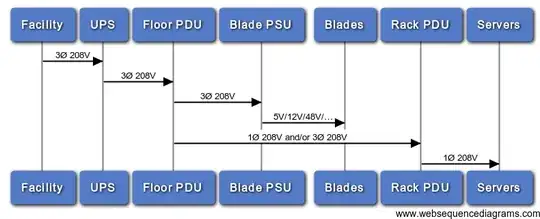We've got 2 UPSes in our server room. One's 3 phase, and has a 3phase supply, yet the APC network stats thing only says
Incoming Voltage: 230.1 Volts
The other is a single phase one with no network-type monitoring.
What I'd really like to know, and can't seem to find out anywhere.. What does a UPS do with the 3 separate phases? Does it use both of them to charge the batteries, then provide a single sinewave output? This would be ideal, because then we'd be able to effectively use the UPS to convert 3 separate phases (which must remain so, else you get bangy power supplies and the magic smoke escapes).
For reference.. the 3-phase one is a "Smart-UPS RT 8000 XL".
Question the First: Why does the voltage on the 3-phase UPS' web interface say 230, not 415?
Question the Second: What on earth does the UPS do with 3 phases of power?
Yes, I've looked on APC's website, but couldn't find a definitive answer.
